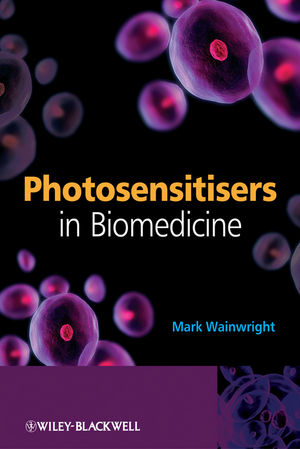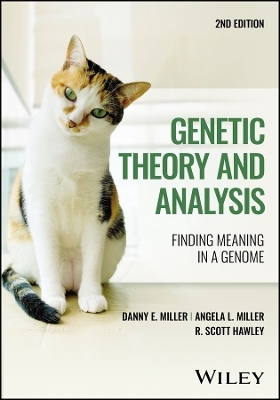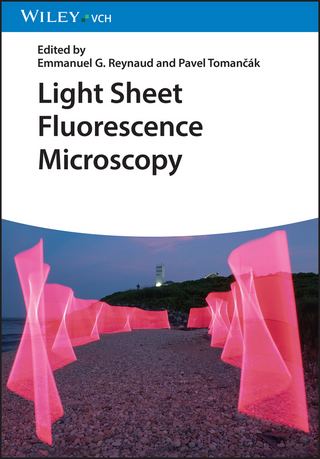
Photosensitisers in Biomedicine
Wiley-Blackwell (Verlag)
978-0-470-51060-5 (ISBN)
- Titel ist leider vergriffen;
keine Neuauflage - Artikel merken
The book then moves on to discuss the chemistry of photosensitisers and closes with their numerous applications, for example, photodynamic therapy, photodiagnosis, photodynamic antimicrobial chemotherapy (PACT) and other non-oncological applications such as optical, arterial plaques and stents.
Dr Mark Wainwright, School of Pharmacy and Chemistry, Liverpool John Moores University, UK.
Author's introduction. PART 1: INTRODUCTION. 1. Light. 1.1 Electromagnetic radiation in everyday life. 1.2 Radiation and tissue. 1.3 Light, electrons and molecules. 1.4 Photoreaction. 1.5 Dental/plastics curing. 1.6 Photoaging/photofading/photobleaching. References. 2. Dyes and stains. 2.1 Dye use. 2.2 Textile dyeing and biological staining. 2.3 Biological stains and biomedical photosensitisers. 2.4 The human factor. 2.5 Dyes and drug development. 2.6 Dyes and stains and photosensitiser design. References. 3. Photosensitisers and photosensitisation. 3.1 Photosensitiser action. 3.2 The photodynamic effect and cell death. 3.3 Photosensitising drug discovery. 3.4 Fitness for purpose. 3.5 Organic versus inorganic photosensitisers. References. PART 2: CHEMISTRY OF PHOTOSENSITISERS. 4. Azines. 4.1 Acridines. 4.2 Acridine synthesis. 4.3 Rationale. 4.4 Acridines in photodynamic therapy. 4.5 Phenanthridines. 4.6 Phenaziniums. 4.7 Phenoxaziniums. 4.8 Phenothiazinium derivatives. 4.9 Reduction--oxidation activity. 4.10 Hydrophilicity?lipophilicity. 4.11 Molecular planarity. 4.12 Benzannelated derivatives. 4.13 Synthetic approaches. References. 5. Triarylmethanes and xanthenes. 5.1 Triarylmethanes. 5.2 Victoria blue series. 5.3 Structure and photoproperties in triarylmethanes -- extending the long-wavelength absorption. 5.4 Synthesis. 5.5 Xanthene derivatives. 5.6 Biological uses. 5.7 Rhodamines. 5.8 Rosamines. 5.9 Pyrylium compounds. 5.10 Pyronines. References. 6. Porphyrins. 6.1 Central metals. 6.2 Meso compounds. 6.3 Amino derivatives. 6.4 Hetero-porphyrins. 6.5 Chlorins. 6.6 Benzoporphyrin derivative. 6.7 Temoporfin. 6.8 Tookad. 6.9 Purpurins. 6.10 Texaphyrins. 6.11 Porphycenes. 6.12 5-Aminolaevulinic acid. 6.13 Esters. References. 7. Phthalocyanines. 7.1 General features. 7.2 Phthalocyanine synthesis. 7.3 Photosens. 7.4 Naphthalocyanines. 7.5 Hetero-fused systems. 7.6 Silicon derivatives. 7.7 Photoantimicrobial activity. References. 8. Cyanines. 8.1 Synthesis. 8.2 Merocyanine 540. 8.3 N,N'-bis(2-ethyl-l,3-dioxolane)kryptocyanine. 8.4 Indocyanine green. 8.5 Structural improvement. 8.6 Squaric and croconic acid derivatives. 8.7 Functional cyanines. References. 9. Natural product photosensitisers. 9.1 Condensed aromatic pigments: perylene- and phenanthroperylenequinones. 9.2 Hypericin-type photosensitisers. 9.3 Hypocrellins. 9.4 Anthraquinones. 9.5 Psoralens (furocoumarins). 9.6 Isoquinoline alkaloid photosensitisers. 9.7 Riboflavin. 9.8 Terthiophenes. References. PART 3: APPLICATIONS. 10. PDT in oncology. 10.1 Photosensitisers for use in photodynamic therapy. 10.2 Indications for photodynamic therapy. 10.3 Skin. 10.4 Head and neck. 10.5 Gastrointestinal tract. 10.6 Breast. 10.7 Lung. 10.8 Genitourinary tract and prostate. 10.9 Brain. 10.10 Haematological disease (leukaemia and lymphoma). 10.11 Targeting/formulation. 10.12 Liposomes. 10.13 Biomolecular conjugation. 10.14 Dendrimers. 10.15 Nanoparticles. 10.16 Magnetic targeting. 10.17 Light in photodynamic therapy. References. 11. Antimicrobial -- PACT. 11.1 Antimicrobial and photoantimicrobial action. 11.2 Applications. 11.3 Blood. 11.4 Thionin/light + low-dose UVB for the decontamination of platelet concentrates. 11.5 The cellular problem. 11.6 A role for photodynamic antimicrobial chemotherapy in tropical medicine? References. 12. Non-oncological applications. 12.1 Age-related macular degeneration. 12.2 Atherosclerosis. 12.3 Endometreosis. 12.4 Port wine stain. 12.5 Arthritis and autoimmune disorders. 12.6 Photodynamic diagnosis. 12.7 Photocytotoxics and photochemical internalisation. References. Index.
| Erscheint lt. Verlag | 29.3.2010 |
|---|---|
| Verlagsort | Hoboken |
| Sprache | englisch |
| Maße | 175 x 253 mm |
| Gewicht | 716 g |
| Themenwelt | Medizin / Pharmazie ► Medizinische Fachgebiete ► Biomedizin |
| Naturwissenschaften ► Biologie ► Mikrobiologie / Immunologie | |
| Naturwissenschaften ► Chemie | |
| ISBN-10 | 0-470-51060-9 / 0470510609 |
| ISBN-13 | 978-0-470-51060-5 / 9780470510605 |
| Zustand | Neuware |
| Haben Sie eine Frage zum Produkt? |
aus dem Bereich


